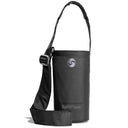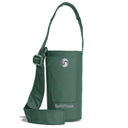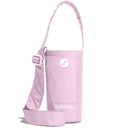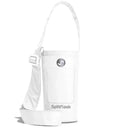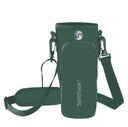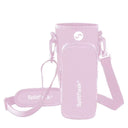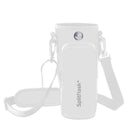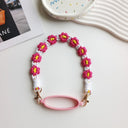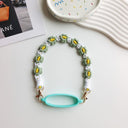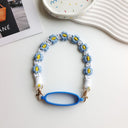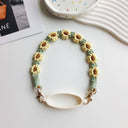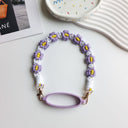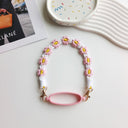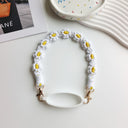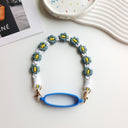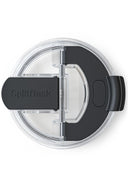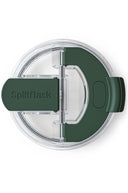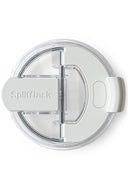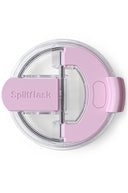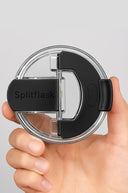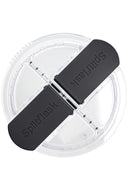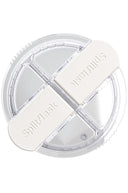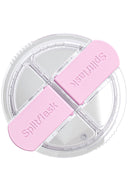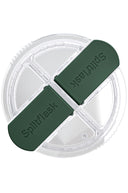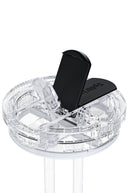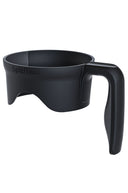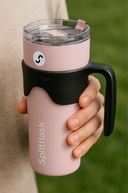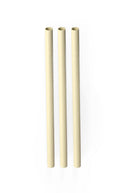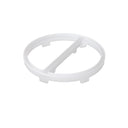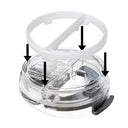30oz TUMBLER SLING BAG 19% de réduction
30oz TUMBLER SLING BAG 16% de réduction
Hand-Woven Daisy Carrier – Compatible with 30oz & 40oz Splitflask
STRAW & SPOUT LID 33% de réduction
DOUBLE STRAW LID (Back Order) 16% de réduction
30oz TUMBLER HANDLE (Back Ordered) 48% de réduction
SPLITFLASK TUMBLER STRAWS (30OZ) SET OF THREE
Splitflask Tighter Seal Gasket


2 DRINKS 1 BOTTTLE
Dual-chambered tumbler holds hot coffee and cold water. Enjoy beverages on the go without waste, in a durable, BPA-free Tritan tumbler.
Do Stainless Steel Water Bottles Rust? | Why Doesn't Stainless Steel Rust?
Stainless steel water bottles are renowned for their durability and resistance to rust. Unlike other metals, stainless steel has properties that make it highly resistant to corrosion, making it a popular choice for reusable water bottles.
Why Doesn't Stainless Steel Rust?
Stainless steel is an alloy composed of iron, carbon, and a minimum of 10.5% chromium. The presence of chromium is crucial as it forms a thin layer of oxide on the steel's surface, known as the "passive layer." This layer is invisible to the naked eye and prevents oxygen and moisture from penetrating the steel, thereby preventing rust.
The Science Behind Rust Resistance
Chromium Oxide Layer: The chromium in stainless steel reacts with oxygen to form a thin, stable layer of chromium oxide. This layer acts as a barrier that protects the underlying steel from rusting.
Self-Healing Property: If the surface layer is scratched, the chromium in the stainless steel reacts with oxygen in the air to form a new chromium oxide layer, maintaining the rust-resistant barrier.
Other Elements: Stainless steel may also contain other elements such as nickel, molybdenum, and titanium, which enhance its corrosion resistance and mechanical properties.
Types of Stainless Steel
Stainless steel comes in different grades and types, each offering various levels of corrosion resistance and durability. The most common types used in water bottles are:
- 304 Stainless Steel (18/8): This is the most common grade used in water bottles and kitchenware. It contains 18% chromium and 8% nickel, providing excellent resistance to rust and corrosion.
- 316 Stainless Steel (Marine Grade): This grade contains 16% chromium, 10% nickel, and 2% molybdenum, offering superior resistance to pitting corrosion, especially in saltwater environments. It is often used in marine applications and medical equipment.
Benefits of Stainless Steel Water Bottles
Durability: Stainless steel is highly durable and can withstand daily wear and tear without compromising its structural integrity.
Safety: Unlike plastic, stainless steel does not contain harmful chemicals such as BPA, which can leach into beverages.
Eco-Friendly: Stainless steel water bottles are reusable and recyclable, reducing the need for single-use plastic bottles and contributing to environmental sustainability.
Temperature Retention: Many stainless steel bottles are vacuum-insulated, keeping drinks hot or cold for extended periods.
Hygienic: Stainless steel is non-porous, making it resistant to bacteria and odors. It is also easy to clean and maintain.
What Material Can Make Stainless Steel Rust?
While stainless steel is highly resistant to rust, certain conditions and materials can compromise its corrosion resistance:
- Chlorides: Exposure to high levels of chlorides, such as saltwater, can lead to pitting corrosion. This type of corrosion creates small pits or holes in the stainless steel.
- Harsh Chemicals: Prolonged contact with harsh chemicals, including acids and strong cleaning agents, can damage the protective oxide layer and cause corrosion.
- Mechanical Damage: Physical damage such as scratches or dents can breach the protective layer and expose the underlying steel to the elements, increasing the risk of rust.
- Contamination: Contact with ordinary steel or iron particles can cause rusting through a process known as cross-contamination. These particles can embed into the stainless steel surface and initiate corrosion.
Preventing Rust in Stainless Steel Water Bottles
Proper Cleaning: Regularly clean your stainless steel water bottle with mild soap and water. Avoid using abrasive cleaners or scrubbers that can scratch the surface.
Dry Thoroughly: After washing, dry the bottle thoroughly to prevent moisture from lingering, which can lead to corrosion over time.
Avoid Chlorides: Minimize exposure to chlorides, especially if using the bottle in saltwater environments. Rinse with fresh water after exposure to saltwater.
Handle with Care: Avoid dropping or denting the bottle, as physical damage can compromise the protective layer.
Use Protective Linings: Some stainless steel bottles come with protective linings to enhance corrosion resistance. Ensure these linings are intact and free from damage.
Store Properly: When not in use, store the bottle in a dry place to minimize exposure to moisture.
Maintaining the Longevity of Stainless Steel Water Bottles
Routine Maintenance: Perform regular maintenance checks to ensure the bottle remains in good condition. Look for signs of wear and tear, and address any issues promptly.
Use Appropriate Cleaners: Use cleaners specifically designed for stainless steel to maintain its shine and protect the surface.
Check for Damage: Regularly inspect the bottle for dents, scratches, or any damage that could compromise its rust resistance.
Reapply Protective Coatings: If your bottle has a protective coating, reapply it periodically to maintain its effectiveness.
FAQs
Do stainless steel water bottles rust?
Stainless steel water bottles are highly resistant to rust due to the protective chromium oxide layer. However, under certain conditions, such as exposure to chlorides or harsh chemicals, they can corrode.
Why doesn't stainless steel rust?
Stainless steel doesn’t rust because it contains chromium, which forms a thin layer of chromium oxide on the surface. This layer prevents oxygen and moisture from reaching the underlying steel, thus preventing rust.
What material can make stainless steel rust?
Chlorides, harsh chemicals, mechanical damage, and contamination with ordinary steel or iron particles can compromise the rust resistance of stainless steel, leading to corrosion.
How should I clean my stainless steel water bottle?
Clean your stainless steel water bottle with mild soap and water. Avoid using abrasive cleaners or scrubbers. Thoroughly dry the bottle after washing to prevent moisture from causing rust.
Can I put my stainless steel water bottle in the dishwasher?
While many stainless steel water bottles are dishwasher safe, it’s always best to check the manufacturer's instructions. Hand washing is generally recommended to preserve the bottle’s finish and integrity.
How long do stainless steel water bottles last?
With proper care and maintenance, stainless steel water bottles can last for many years. Their durability and resistance to wear make them a long-term investment.
Are there different grades of stainless steel used in water bottles?
Yes, the most common grades used in water bottles are 304 (18/8) stainless steel and 316 (marine grade) stainless steel. Both offer excellent corrosion resistance, with 316 providing superior resistance in saltwater environments.
Is stainless steel safe for drinking water?
Yes, stainless steel is safe for drinking water. It does not leach harmful chemicals, making it a healthy and environmentally friendly option.
How can I prevent my stainless steel water bottle from getting scratched?
Avoid using abrasive cleaners and scrubbers. Handle the bottle with care to prevent drops and impacts. Consider using a protective sleeve or case.
What should I do if my stainless steel water bottle starts to rust?
If rust appears, clean the area with a non-abrasive cleaner and a soft cloth. Ensure the bottle is thoroughly dried after cleaning. If the rust persists, it may be due to damage or exposure to harsh conditions, and you should consider replacing the bottle.
Conclusion
Stainless steel water bottles are an excellent choice for their durability, safety, and eco-friendliness. Understanding why stainless steel doesn't rust and how to maintain its integrity can help you get the most out of your bottle. By taking proper care and being mindful of the conditions that can cause rust, you can ensure your stainless steel water bottle remains a reliable and sustainable hydration solution for years to come.
Investing in a high-quality stainless steel water bottle, like the Splitflask, not only benefits your health and hydration but also supports environmental sustainability by reducing plastic waste.
Final Thoughts on the Importance of Choosing the Right Water Bottle for Your Needs: Choosing the right water bottle is crucial for maintaining good hydration habits and supporting a sustainable lifestyle. The Splitflask Tumbler offers a perfect balance of functionality, durability, and environmental benefits, making it an ideal choice for modern consumers.
